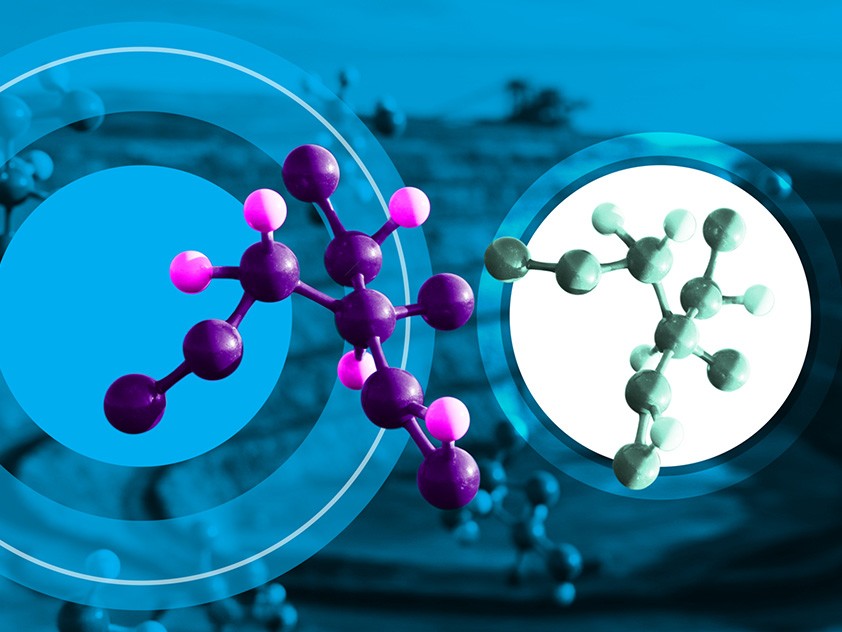Turning NOx emissions into profit
Posted: October 17, 2025

Mines may soon join the circular economy, turning otherwise harmful waste into valuable feedstock. It’s all thanks to advances in nitrogen chemistry that efficiently convert waste nitric oxide (NO) into useful nitric acid (HNO3). The technology promises to provide mining companies with environmental benefits, reduced costs and possibly even new revenue streams.
Our Industrial Life
Get your bi-weekly newsletter sharing fresh perspectives on complicated issues, new technology, and open questions shaping our industrial world.
Turning NO into nitric acid
Like many other heavy industries, mining produces a lot of nitric oxide (NO), largely from the operation of diesel machinery, boilers and high-temperature combustion. Nitric oxide is a primary component of smog and acid rain.
Mines already use equipment to remediate NO emissions, such as catalytic converters in diesel engines. But those technologies require expensive catalysts or high temperatures to work—and they churn out relatively useless nitrogen gas.
Meanwhile, mines need to source another nitrogen chemical—nitric acid—to help leach out metals such as gold, silver, copper and nickel from ore. Nitric acid is currently produced via the Ostwald process. The process begins with ammonia, which is usually produced from fossil fuels using the Haber-Bosch process, which is responsible for 1–2% of the world’s total CO2 emissions.
Converting that ammonia into nitric acid requires even more energy and produces even more emissions. It burns ammonia in oxygen under high pressure at temperatures of 900°C (1,650°F) in the presence of a platinum-rhodium catalyst, creating nitric oxide (NO), which oxidizes into nitrogen dioxide (NO2). The nitrogen dioxide then reacts with water to form dilute nitric acid. A side product of the process is nitrous oxide (N2O), a greenhouse gas hundreds of times more potent than carbon dioxide.
In the end, mines pay to remediate nitric oxide emissions and then pay more to ship in emissions-heavy nitric acid produced offsite. The new advance would let mines collect their own nitric oxide emissions and convert them into nitric acid onsite—all with a low-energy, low-emissions process.
A “plug-and-play" module
“The beauty of this work is that we can directly go from a waste emission to a valuable product,” says Feng Jiao, the chemical engineer spearheading the new technology. Jiao’s process converts nitric oxide and water vapor into 32% commercial-grade nitric acid using an electrolyzer that can be powered by sustainable electricity.
It also works at near-ambient temperatures, further reducing the power it requires. Instead of the precious metal catalysts used by other NO remediation systems, the electrolyzer uses inexpensive carbon catalysts.
“Our primary motivation is to address NO waste gases from mining sites. Our technology enables on-site NO conversion back into nitric acid for immediate reuse, creating a more sustainable and circular process,” Jiao says. The electrolyzer could be constructed on-site as a “plug-and-play" module without significant infrastructure investment.
Miners producing nitric acid on site would eliminate the emissions used to synthesize it from fossil fuels as well as the emissions created transporting it to remote mines.
Pulling profit from the circular economy
The new technology promises to be financially as well as environmentally rewarding. Jiao’s team estimates that it would cost about 30 cents per kilogram to produce nitric acid with the new electrolyzer. That’s less than the current market price of 33 cents per kilogram. So, miners could save money by reducing their emissions: the holy grail of a circular economy.
Mines could also profit off any excess nitric acid they produce. After all, mining isn’t the only industry that requires a steady supply of nitric acid. The fertilizer industry consumes 78% of total production, which it uses to produce the ammonium nitrate fertilizer that makes modern agriculture possible. In principle, miners could acquire a new revenue stream selling off excess nitric acid.
The technology still has further to go before mining and other industries can start benefiting from it, though. The electrolyzer currently operates reliably for 40-hour periods. Jiao and his team are working on extending that operational time to make it commercially viable. They’re also working on developing the technology so that it not only converts NO but also N2O—the third most emitted greenhouse gas—into nitric acid.
“Nitrous oxide is a tough one,” Jiao says. “We have a way to convert nitrous oxide to nitrogen. Now we want to convert it to nitric acid.”